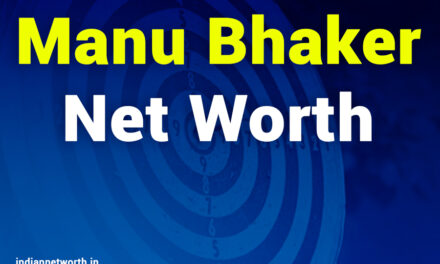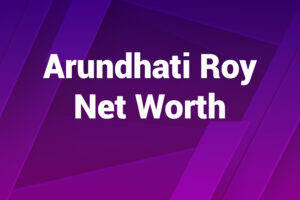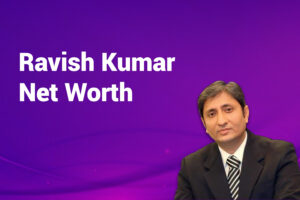Journalists and business outlets estimate athlete wealth by adding verified earnings (prize money, salaries, documented endorsement fees) and public asset disclosures, then adjusting for taxes, management fees, and living costs.
For high-profile athletes like Sindhu, media also lean on lists compiled by outlets such as Forbes and reported sponsorship deals. Multiple outlets converged on a figure around Rs 59–60 crore (~$7.1M) for recent years.
Numbers differ slightly across reports because outlets use different cut-off dates and inclusion rules. Still, the mid-Rs 50–60 crore estimate has become the commonly cited range across Indian and international business coverage.
Income stream #1 — Prize money, tournament earnings, and government awards
Sindhu earned major prize money over a long, elite career. She won medals at the Olympics (silver, bronze), a World Championship title (2019), and multiple BWF World Tour events. Big tournament wins and deep runs deliver sizeable prize cheques. Media reporting also includes large cash awards that India and state governments grant for international medalists.
These government and institutional awards sometimes match or exceed single-tournament payouts. Indian sport bodies and some state governments have historically rewarded Olympic and World Championship medal winners with multi-crore sums. Combined, tournament prize money plus awards have contributed materially to Sindhu’s financial base.
Income stream #2 — Endorsements and sponsorships (the growth engine)
Brands pay for visibility. Sindhu ranks among the most marketable Indian athletes. She appears on national campaigns. Brands report large multi-year contracts with her.
One of the most cited agreements came in February 2019, when reports stated that Sindhu signed a four-year deal with Li-Ning worth close to Rs 50 crore (the reporting explained that roughly Rs 40 crore went directly to her, and the remainder covered equipment and activation). That contract alone marks a major inflection point in her commercial earnings.
Media lists and Forbes snapshots repeatedly place Sindhu among the highest-earning female athletes worldwide in multiple years. Those rankings combine on-court earnings with endorsements to derive annualized income figures. Endorsement fees vary deal to deal, yet the headline contracts and recurring brand work provide a steady, high-margin income stream.
Income stream #3 — Investments, brand partnerships, and equity
In recent years, top athletes diversified into entrepreneurship and investing. Sindhu followed that path. She took on brand-ambassador roles and invested in consumer brands and agritech/food startups.
Examples reported in the press include her joining as investor/ambassador for wellness brand Hoop (2024) and investing in Greenday’s Better Nutrition (a biofortified staples brand). These moves create new income opportunities: equity upside and recurring ambassador fees.
Such investments suit athletes who want long-term value beyond playing years. They also improve a public profile that helps endorsements. For Sindhu, these investments add both immediate brand legitimacy and potential medium-term financial upside.
Timeline: key money moments in her career
- 2012–2016: Rise through international ranks; early endorsements and modest prize income.
- 2016 Rio Olympics: Olympic medal boosts fame and triggers higher endorsement interest and government rewards. Wikipedia
- 2017–2019: Strong BWF results. Media report the large Li-Ning sponsorship in 2019 (~Rs 50 crore). That deal signals top commercial value.
- 2019 World Championship (gold): On-court peak and increased sponsorship leverage.
- 2021 Tokyo Olympics: Additional medal and renewed visibility for sponsors.
- 2024 onward: Investments and ambassador roles in consumer/health startups; sustained coverage of net worth in major outlets.
This timeline shows how competitive success unlocked commercial deals, and how later-stage financial moves focused on diversification.
Prize money — How much has she won on court?
Prize money comes from BWF tournaments and special winnings. A single top-tier world event winner can earn tens of thousands of dollars; season totals vary widely. Media outlets fold prize money into overall earnings, but they do not always publish a single consolidated figure for a player’s career earnings.
Public coverage emphasizes that Sindhu’s tournament success created the platform for larger commercial contracts, rather than making her wealthy from prize money alone.
Endorsements supply most headline income. Still, tournament purses and medal awards contributed significantly, especially when combined with government cash awards after Olympic and World Championship success.
Breakout sponsorship: the Li-Ning deal (why it matters)
The 2019 Li-Ning contract stands out in two ways:
- It delivered a large, guaranteed sum over multiple years. That stability helped her plan long-term.
- It signaled cross-industry confidence in badminton’s commercial potential for top Indian players. Other brands watched and increased offers across sport verticals.
Even if contract accounting varies by outlet, the deal’s market signal mattered more than the exact rupee figure. Brands began treating top shuttlers as mainstream celebrity endorsers. That dynamic lifted Sindhu’s market value for subsequent deals.
Assets: house, vehicles, and public-facing possessions
Press features often highlight celebrity assets because they illustrate lifestyle and investment choices. Sindhu’s reported hilltop home in Hyderabad’s Film/Jubilee Hills area receives regular coverage. Reports describe a modern multi-storey layout, a terrace garden, and a home theater. Media also list luxury cars associated with her name, such as a BMW X5 and other premium vehicles. These media reports reflect public interest and offer context on how athletes allocate earnings into real estate and lifestyle.
Caveat: publicity images and third-party reporting about gifts or specific vehicles vary in accuracy. Still, real estate and a stable residence in a premium neighbourhood align with the net-worth estimates outlets publish.
Sindhu and Forbes: annualized earnings and rankings
Forbes appears repeatedly in media synopses of Sindhu’s earnings. Articles and aggregated lists place her among the highest-paid female athletes globally in several years. These listings derive from combined prize, endorsement, and appearance income for an annual period.
Forbes’ presence in multiple years confirms sustained commercial value rather than a one-off spike. Media cite annual income figures (millions of dollars) and use those to support overall net-worth calculations.
Taxes, agents, and household expenses — the missing pieces
Public net-worth estimates rarely include exact tax bills, management fees, or personal spending. Those items reduce disposable wealth. Credible reporting subtracts reasonable estimates for taxes and agent commissions.
For athletes in India, taxes on income and endorsement fees can take a significant share, depending on residency and structure. Because media cannot observe private tax filings, they report conservative net-worth ranges rather than exact account balances.
Comparing Sindhu to other Indian athletes
Sindhu ranks near the top among Indian female athletes in terms of earnings and net worth. She sits behind some of India’s top cricketing figures in absolute net worth but leads many peers in non-cricket sports.
Compared with fellow Olympic medallists and world champions, her endorsements and investments give her an edge in long-term financial stability. Publications that rank India’s wealthiest sports personalities repeatedly place her in the upper tier.
How endorsements translate to long-term wealth
Endorsement contracts provide:
- Immediate cash that funds lifestyle and investments.
- Activation budgets that increase a player’s public reach.
- Multi-year guarantees that smooth income volatility.
Sindhu’s high-value contracts (Li-Ning and other national brands) provided the capital cushion she later used to buy property and invest in startups. Those actions shifted part of her income from active (playing-related) to passive (equity stakes and rental/real estate returns).
Portfolio moves and social positioning
Athlete investors pick sectors that align with personal brand: fitness, nutrition, and wellness. Sindhu’s investments in biofortified staples and wellness brands match that pattern.
They also help her expand reach into health-conscious consumer audiences—an attractive segment for B2C endorsements. Publications flagged her roles with Better Nutrition (Greenday) and Hoop, showing how athletes reuse credibility into consumer trust and, potentially, financial upside.
The role of public recognition and awards
India’s national awards and cash prizes uplift athletes’ incomes. Sindhu holds India’s highest sports and civilian honours (Khel Ratna, Padma awards, Arjuna). Those awards carry symbolic and sometimes material benefits.
Governments and state bodies have granted large cash amounts to Olympic and world medallists. Media incorporate those cash awards into net worth calculations where possible. That accounting nudges estimates upward, especially for Olympic medallists.
Reality check: what the headline net worth does and doesn’t show
A headline figure (e.g., Rs 60 crore) gives a useful summary. It does not reveal:
- Liquid cash on hand.
- The exact value of private equity holdings.
- Ongoing tax liabilities or loan encumbrances.
- Annual cashflow vs. one-time lumpsum receipts.
Treat net-worth estimates as directional: they show scale and rank. They do not substitute for audited financial statements. Journalists use public signals to produce conservative, well-sourced estimates, and Sindhu’s figure follows that method.
What to watch next (for Sindhu’s financial story)
- Contract renewals and new brand deals. Big renewals can change annual income materially.
- Performance and visibility. Deep runs at major tournaments keep endorsement interest high. Recent tournament results affect short-term earnings potential.
- Investment exits or new funding rounds. If startups she backed raise or sell, she could show capital gains that increase net worth.
Frequently asked questions (short answers)
Q: Is Rs 60 crore an official number?
A: No. Media and business outlets estimate that range using documented deals, prize money, and reported assets. It’s the consensus estimate across reputable outlets.
Q: Does prize money make up most of her wealth?
A: No. Prize money helps, but endorsements and long-term contracts provide the bulk of headline income. Investments add further upside.
Q: Has she invested outside sport?
A: Yes. Recent press notes investments in food/health startups and roles as brand ambassador for consumer wellness lines.
Q: Will net worth grow after retirement?
A: Likely, if she converts brand equity into equity stakes and recurring businesses. Many elite athletes increase net worth after they stop competing by monetising their brand.
Putting it all together — a short verdict
- V. Sindhu converted sporting excellence into sustained commercial success. She monetised athletic peak moments through large sponsorship deals and then diversified into investments aligned with her public image.
That path produced the mid-Rs 50–60 crore net-worth range media report today. The figure reflects both on-court earnings and off-court commercial judgment. If she keeps investing and stays visible, the net worth will likely trend upward even as her playing career evolves.
Sources and further reading
Key sources used to compile this article:
- GQ India profile and net-worth roundup.
- LiveMint coverage and compiled asset reporting.
- India Today/Times of India reporting on the Li-Ning sponsorship.
- Forbes/Forbes-cited earnings and aggregated reporting via media outlets.
- Entrepreneur / Economic Times reporting on investments in Greenday’s Better Nutrition / Hoop.
- Features on Sindhu’s home and lifestyle in Hyderabad.








